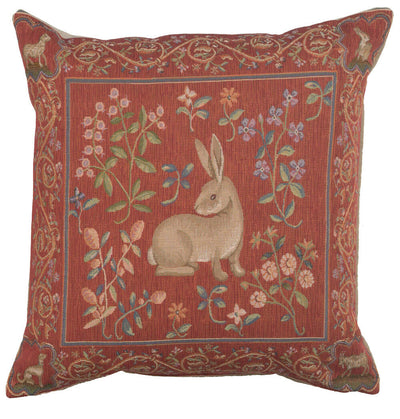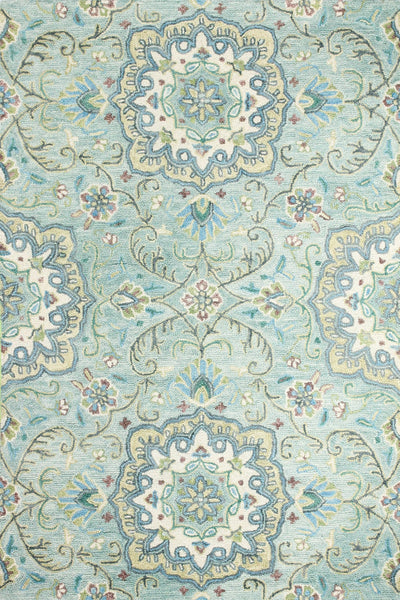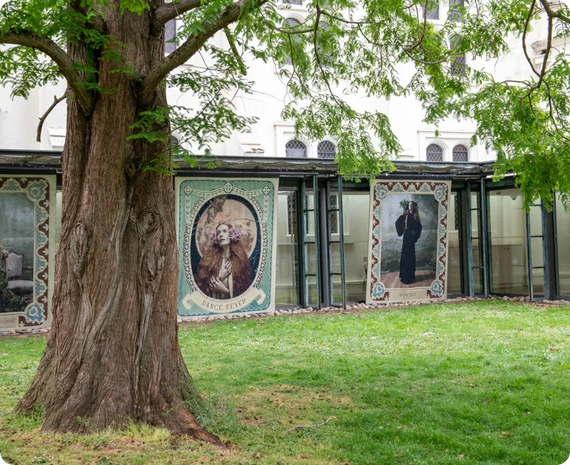How to Design Your Own Custom Tapestry: A Step-by-Step Guide
Thinking about creating your own custom woven tapestry? It’s one of the most rewarding ways to design something truly personal—using color, texture, and detailed patterns that are woven right into the fabric.
The best part? You don’t need to be an expert to get started. With a simple loom, the right yarn, and a clear design plan, making your own woven tapestry is absolutely doable. That said, understanding the various elements of tapestry weaving is essential to ensure your design translates accurately from concept to cloth. In this step-by-step guide, we’ll walk you through the entire design process—covering everything from choosing yarn type to finishing it for display. Let's begin.
Step-By-Step Guidance For Designing Custom Woven Tapestry
Step 1: Decide On The Purpose And Placement
Before jumping into the creative process, take a moment to think about the purpose and final home of your custom tapestry. Use painter’s tape to mark out the dimensions on your wall. Then, take a step back and see how it feels in your space—it’s a quick way to visualize the final look.
Step 2: Create A Concept Sketch Or Pattern
All custom tapestries begin with a personal design plan, often called a cartoon — a full-size sketch of your desired image or pattern. Here's how to approach it:
-
Use graph paper or plain butcher paper that matches the dimensions of your finished piece.
-
Keep your design bold and simple, as weaving isn’t great for tiny details like thin lines or tricky shading.
-
You can draw freehand or use photo references as a base for abstracting shapes.
-
If you want, you can also use tracing paper to try out different color combinations. Just place it over your design and lightly color it in with markers or pencils to see how everything looks together.
Step 3: Choose The Right Yarn And Color Palette
Yarn is like your paint—it's the main material used to bring your custom design to life by weaving colored strands through vertical warp threads. Since this isn’t mass-produced but made to reflect your personal vision, picking the right materials matters if you want to make your own tapestry. Have a look at the multiple options you can choose from:
-
Fiber type: Cotton, wool, and linen are great for beginners. Wool adds texture and warmth; cotton gives a cleaner look.
-
Color palette: Stick to 4–6 main colors. Choose contrasting tones if you want the design to pop.
-
Texture Tip: You can mix yarn thicknesses here and there to create raised areas or highlight details for your custom wall tapestry.
Step 4: Set Up Your Loom
The loom is the base of your whole tapestry, so setting it up the right way makes weaving a lot easier. If you're doing it yourself, a frame loom is the easiest type to make at home. You can reuse an old wooden photo frame or build one from a few pieces of wood. To hold your warp threads in place, just add nails or screws evenly along the top and bottom—about ¼ to ½ inch apart, depending on how thick or tight you want your weave to be.
Here’s how to warp the loom:
-
Use strong, non-stretchy thread. Start at the bottom left nail and wind up and down across the frame, keeping the tension even.
-
Avoid warping too tightly or loosely, as consistency is important to prevent wavy edges or sagging rows in your tapestries.
Step 5: Transfer Your Design To The Loom
Once your loom is warped, place your pattern behind or underneath the warp threads so you can see it clearly while you weave. You can transfer your design in the following ways:
-
Tape or clip your cartoon behind the loom if it’s transparent or open-backed.
-
For solid frame looms, pin a shrunken version of your cartoon next to your work area as a visual reference.
-
For tricky curves or detailed shapes, lightly mark the warp threads with a water-soluble pencil to guide where colors change.
Step 6: Start Weaving From Bottom To Top
Now comes the weaving! Begin from the bottom and work your way up using your yarn and a customisable tapestry needle or shuttle.
-
Start with a few rows of plain weave (over-under pattern) to create a base.
-
For color areas, use weft interlocks or slits to transition between blocks.
-
To shape curves or angles, weave shorter rows and build up shapes gradually (known as shaping or build-up technique).
Step 7: Beat The Weft Evenly
It's important to beat the weft evenly using a fork, tapestry comb, or beater. After each row of yarn, gently press it down to keep the texture consistent across your piece.
Step 8: Secure And Finish The Top
Once your tapestry custom design reaches the top:
-
Weave a few rows of plain weave to stabilize the tapestry.
-
Tie off or stitch the final weft yarns securely.
-
Carefully cut the warp threads from the loom, keeping enough length to tie knots or loop around a dowel.
Step 9: Finish The Edges And Mounting
Finishing touches matter just as much as the design itself. For this, you can:
-
Tie off the warp threads in double knots or braid them for a decorative edge.
-
Attach a dowel or wooden rod to the top for hanging.
-
For a cleaner back, you can stitch a fabric liner if desired (though it’s optional).
Once your tapestry is finished, take a moment to enjoy the result. To keep it looking great, hang it somewhere out of direct sunlight so the colors don’t fade.
Conclusion
Designing your own custom tapestry is all about turning your creative ideas into something real. Whether you’re into detailed patterns or simple textures, the design is completely up to you. With true weaving, you get full creative freedom to make something that feels personal and lasting.
Ready to get started? Begin crafting your designs for small or huge wall tapestry today and see your imagination come to life
















